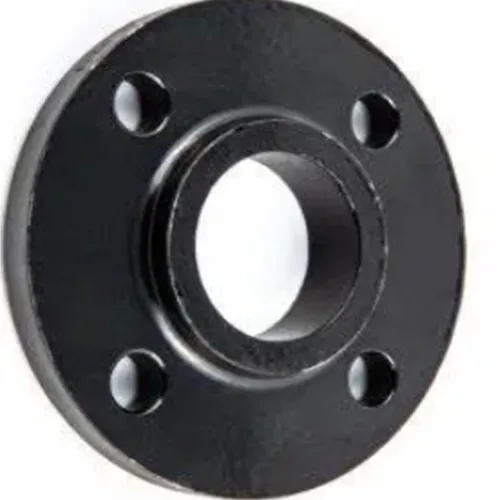-
Cangzhou Yulong Steel Co., Ltd.
-
Phone:
+86 13303177267 -
Email:
admin@ylsteelfittings.com
- English
- Arabic
- Italian
- Spanish
- Portuguese
- German
- kazakh
- Persian
- Greek
- French
- Russian
- Polish
- Thai
- Indonesian
- Vietnamese
- Zulu
- Korean
- Uzbek
- Hindi
- Serbian
- Malay
- Ukrainian
- Gujarati
- Haitian Creole
- hausa
- hawaiian
- Hebrew
- Miao
- Hungarian
- Icelandic
- igbo
- irish
- Japanese
- Javanese
- Kannada
- Khmer
- Rwandese
- Afrikaans
- Albanian
- Amharic
- Armenian
- Azerbaijani
- Basque
- Belarusian
- Bengali
- Bosnian
- Bulgarian
- Catalan
- Cebuano
- China
- China (Taiwan)
- Corsican
- Croatian
- Czech
- Danish
- Esperanto
- Estonian
- Finnish
- Frisian
- Galician
- Georgian
- Kurdish
- Kyrgyz
- Lao
- Latin
- Latvian
- Lithuanian
- Luxembourgish
- Macedonian
- Malgashi
- Malayalam
- Maltese
- Maori
- Marathi
- Mongolian
- Myanmar
- Nepali
- Norwegian
- Norwegian
- Occitan
- Pashto
- Dutch
- Punjabi
- Romanian
- Samoan
- Scottish Gaelic
- Sesotho
- Shona
- Sindhi
- Sinhala
- Slovak
- Slovenian
- Somali
- Sundanese
- Swahili
- Swedish
- Tagalog
- Tajik
- Tamil
- Tatar
- Telugu
- Turkish
- Turkmen
- Urdu
- Uighur
- Welsh
- Bantu
- Yiddish
- Yoruba

Aug . 09, 2024 06:30 Back to list
Innovative Techniques in Valve Casting for Enhanced Performance and Durability in Manufacturing Industries
The Importance of Valve Casting in Modern Industry
Valve casting plays a vital role in various industries, including plumbing, manufacturing, automotive, and aerospace. As a fundamental process in the production of valves, it ensures that components are manufactured to high standards, allowing for enhanced performance and reliability in a multitude of applications. This article explores the significance of valve casting, the different methods involved, and the future of this essential process.
Understanding Valve Casting
Valve casting refers to the process of creating valve components by pouring molten metal into a mold to solidify and take shape. This method enables the production of complex geometries that would be challenging and often impossible to achieve using other manufacturing techniques like machining or forging. The versatility of valve casting allows for the creation of various valve types, including ball valves, gate valves, and check valves, each serving specific functions across multiple sectors.
Methods of Valve Casting
Several casting techniques are employed in the manufacturing of valves, each with its advantages and applications
1. Sand Casting This traditional method involves creating molds from sand and is suitable for producing heavy and large components. Sand casting offers good dimensional accuracy and is cost-effective for low to medium production volumes.
2. Investment Casting Also known as lost-wax casting, investment casting provides precise and intricate details on valve designs. It is often used for smaller parts where accuracy is critical, and thus, is favored in aviation and high-performance automotive applications.
3. Die Casting In this method, molten metal is forced into a mold under high pressure. Die casting is ideal for producing large quantities of small to medium-sized parts with excellent surface finish and dimensional tolerance. This method is commonly used in the manufacturing of aluminum and zinc valves.
4. Centrifugal Casting Used for cylindrical parts, this technique involves pouring molten metal into a rotating mold. The centrifugal force aids in distributing the metal evenly, leading to a higher density and improved mechanical properties.
Key Benefits of Valve Casting
valve casting

The valve casting process is preferred for several reasons
- Complex Shapes Casting allows manufacturers to produce complex and intricate designs that meet specific performance requirements without incurring excessive costs.
- Material Options Various metals and alloys can be used in the casting process, enabling manufacturers to select materials tailored to the application, whether it entails corrosion resistance, strength, or heat resistance.
- Scalability Casting can efficiently produce large runs of parts, making it suitable for both small-scale projects and mass production.
- Cost-Effectiveness While initial setup costs may be higher for some casting methods, the overall manufacturing cost decreases with increased production volume.
Future Trends in Valve Casting
The future of valve casting is marked by innovations and trends aimed at enhancing efficiency and sustainability. Advanced technologies like 3D printing are beginning to integrate into casting practices, allowing for rapid prototyping and reduced lead times for custom parts. Additionally, there is an increasing focus on environmentally friendly materials and processes, pushing manufacturers towards solutions that minimize waste and reduce carbon footprints.
Furthermore, the proliferation of smart technologies is leading to the development of valves equipped with sensors capable of monitoring performance in real-time. As industries move towards automation and IoT applications, the role of valve casting in creating reliable and advanced components becomes ever more critical.
Conclusion
Valve casting is an essential part of creating components that ensure proper fluid control across various industrial applications. By employing diverse methods suited to different needs, manufacturers can produce reliable and complex valves that meet the demands of modern technology. As industry trends evolve, the future of valve casting promises to bring enhanced capabilities, sustainability, and innovations that will shape the way we manage fluid systems.
Latest news
-
ANSI 150P SS304 SO FLANGE
NewsFeb.14,2025
-
ASTM A333GR6 STEEL PIPE
NewsJan.20,2025
-
ANSI B16.5 WELDING NECK FLANGE
NewsJan.15,2026
-
ANSI B16.5 SLIP-ON FLANGE
NewsApr.19,2024
-
SABS 1123 FLANGE
NewsJan.15,2025
-
DIN86044 PLATE FLANGE
NewsApr.19,2024
-
DIN2527 BLIND FLANGE
NewsApr.12,2024
-
JIS B2311 Butt-Welding Fittings LR/SR 45°/90° /180°Seamless/Weld
NewsApr.23,2024











